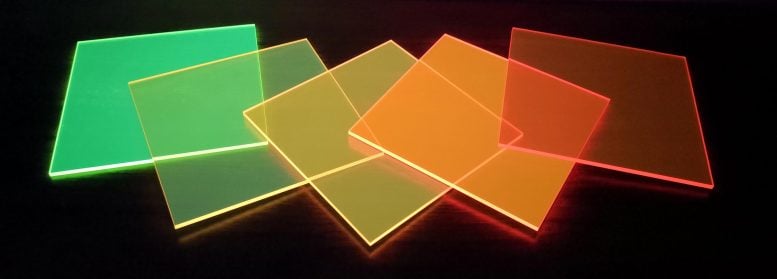
Rice University engineers designed and built windowpanes that redirect sunlight or illumination from indoors to edge-band solar cells. The central layer is a conjugated polymer that serves as a waveguide. Credit: Yilin Li/Rice University
Rice engineers develop polymer cores that redirect light from any source to solar cells.
Rice University engineers have suggested a colorful solution to next-generation energy collection: Luminescent solar concentrators (LSCs) in your windows.
Led by Rafael Verduzco and postdoctoral researcher and lead author Yilin Li of Rice’s Brown School of Engineering, the team designed and built foot-square “windows” that sandwich a conjugated polymer between two clear acrylic panels.
That thin middle layer is the secret sauce. It’s designed to absorb light in a specific wavelength and guide it to panel edges lined with solar cells. Conjugated polymers are chemical compounds that can be tuned with specific chemical or physical properties for a variety of applications, like conductive films or sensors for biomedical devices.
The Rice lab’s polymer compound is called PNV (for poly[naphthalene-alt-vinylene]) and absorbs and emits red light, but adjusting the molecular ingredients should make it able to absorb light in a variety of colors. The trick is that, as a waveguide, it accepts light from any direction but restricts how it leaves, concentrating it onto the solar cells that convert it to electricity.
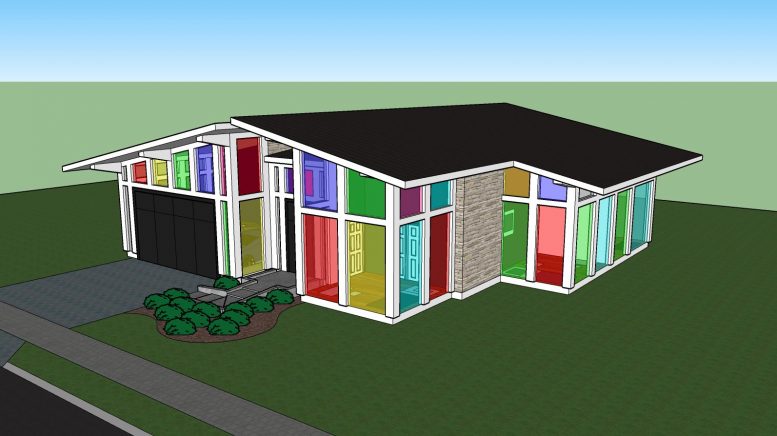
A concept for a house using windowpanes designed by Rice University engineers to redirect light from inside and out to edge-band solar cells. Credit: Yilin Li/Rice University
“The motivation for this research is to solve energy issues for buildings through integrated photovoltaics,” said Li, who began the project as part of a “smart glass” competition. “Right now, solar rooftops are the mainstream solution, but you need to orient them toward the sun to maximize their efficiency, and their appearance isn’t very pleasing.
“We thought, why can’t we make colorful, transparent or translucent solar collectors and apply them to the outside of buildings?” he said.
The study appears in the journal Polymer International.
Admittedly, the amount of juice generated by the Rice team’s test units is far less than that collected by even average commercial solar cells, which routinely convert about 20% of sunlight into electricity.
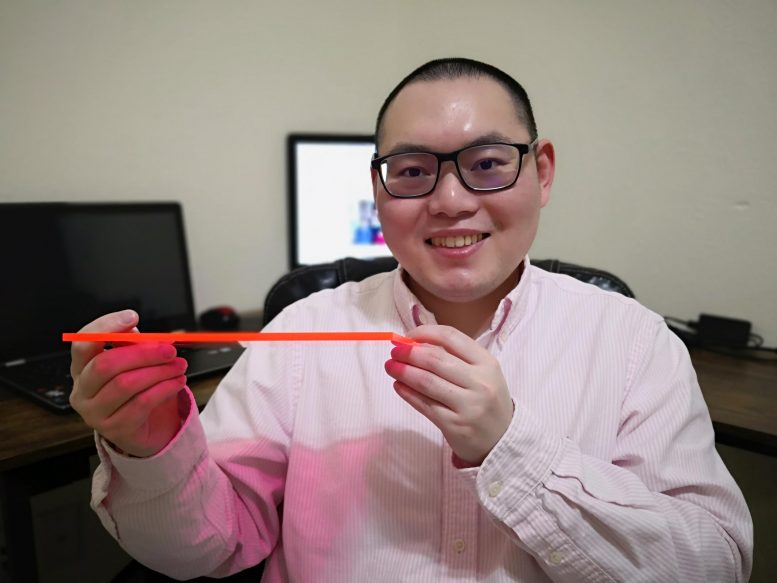
Rice University postdoctoral researcher Yilin Li shows a glowing windowpane with a conjugated polymer center that serves as a waveguide, sending certain frequencies of light to the edges, where it can be absorbed by solar cells. Credit: Yilin Li/Rice University
But LSC windows never stop working. They happily recycle light from inside the building into electricity when the sun goes down. In fact, tests showed they were more efficient at converting ambient light from LEDs than they were from direct sunlight, even though the sunlight was 100 times stronger.
“Even indoors, if you hold up a panel, you can see very strong photoluminescence on the edge,” Li said, demonstrating. The panels he tested showed a power conversion efficiency of up to 2.9% in direct sunlight and 3.6% under ambient LED light.
Various types of luminophores have been developed over the last decade, but rarely with conjugated polymers, according to Verduzco.
“Part of the problem with using conjugated polymers for this application is that they can be unstable and degrade quickly,” said Verduzco, a professor of chemical and biomolecular engineering and of materials science and nanoengineering. “But we’ve learned a lot about improving the stability of conjugated polymers in recent years, and in the future, we can engineer the polymers for both stability and desired optical properties.”
The lab also simulated the return of energy from panels as large as 120 inches square. They reported these panels would provide somewhat less energy, but it would still contribute to a household’s needs.
Li noted the polymer might also be tuned to convert energy from infrared and ultraviolet light, allowing those panels to remain transparent.
“The polymers can even be printed in patterns in the panels, so they can be turned into artwork,” he said.
Reference: “High‐performance hybrid luminescent‐scattering solar concentrators based on a luminescent conjugated polymer” by Yilin Li, Yujian Sun, Yongcao Zhang, Yuxin Li and Rafael Verduzco, 13 January 2021, Polymer International.
DOI: 10.1002/pi.6189
Co-authors are University of Washington alumnus Yujian Sun; Yongcao Zhang, a graduate assistant at the University of Houston, and Yuxin Li, a graduate assistant at the University of Cincinnati.
Solera City Energy supported the research.




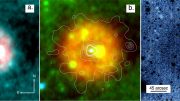
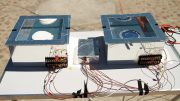



Lets figure the total cost of adding plastic windows into the building eqn, adding in the embedded energy cost to make from fossil fuels, energy cost to destroy or landfill it, then subtracting the energy cost of basic glass windows and subtract the lifetime energy value produced by this. If the answer is positive (and it almost certainly will be) it is a complete waste of time. If negative, then it might be worth doing.
Nice job. Keep up the focus. The area between the infrared and the ultraviolet, ultimately between gamma and radio waves, six sigma and the conical, the rectangular, the triangle and the direction of energies, both highs and lows and positive and negative flows… keep pushing the envelop, and soon well all push through.
Line up the protons using the reflection of the distribution associated with prismatic electromagnetic colors and negative imaging, from which the have the remaining electromagnetic currents associated with that which you do not see, and the flow of energy as on a string creating a plasma effect throughout the plate, based upon exposure. Then just as you say you can capture the energy, positive and negative, as in a solar display to power a battery for instance or use as a detection device for security, something in close proximity being detected by movements in the plasma, as a magnetic motion detector. Or. And this would be as a developer, using it for a room for training the senses associated with various situations in a gaming room, or more defense oriented operations too, where if you wanted to measure, the response, the human ekg, the source and the feeling, go ahead and walk thru… a sensory development station, yaoxa. The organization of the damper wires or twisted active matrix of many flat screens. Like the touch pad of the telecom devices. Notice when your finger print nears the screen… and in some cases one could think to have some fun by increasing the intensity as in the monitoring of a dream. Ci.v ao.
I prefer standard windows for now. Although the idea is very good. Now I am going to change the windows in the apartment and I was recommended to read the article windows and doors Niagara falls on the site https://thwindowsdoors.com/replacement-windows-niagara-falls/. Do you know anything about this? They say that they quickly install windows.